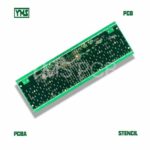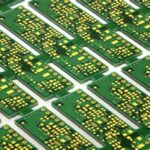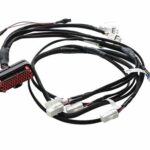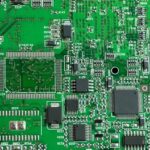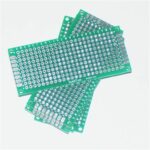3D printing has revolutionized the way we create objects. With the advancements in technology, it has become easier to create 3D models of objects and turn them into physical objects using 3D printers. However, the process of creating a 3D model can be challenging, especially if you are not familiar with the process of 3D scanning.
To create a 3D model of an object, you need to 3D scan it. 3D scanning is the process of creating a digital model of a physical object. The process involves using a 3D scanner to capture the shape and dimensions of the object and create a digital model that can be used for 3D printing. There are different types of 3D scanners available, including handheld scanners, desktop scanners, and industrial scanners. Each scanner has its own unique features and capabilities, and choosing the right one for your needs is essential to creating a high-quality 3D model.
In this article, we will guide you through the process of 3D scanning an object for 3D printing. We will cover the different types of 3D scanners available, the process of preparing the object for scanning, and the steps involved in creating a 3D model. By the end of this article, you will have a better understanding of how to 3D scan an object and create a high-quality 3D model for 3D printing.
Choosing the Right Equipment
When it comes to 3D scanning an object for 3D printing, choosing the right equipment is crucial. There are two main components to consider: 3D scanning hardware and 3D scanning software.
3D Scanning Hardware
The first step in 3D scanning an object is choosing the right hardware. There are several types of 3D scanners available, each with its own strengths and weaknesses. Here are some of the most common types of 3D scanners:
- Structured light scanners: These use a projector to shine a pattern of light onto the object and a camera to capture the reflected pattern. They are great for capturing fine details and are often used for small objects.
- Laser scanners: These use a laser to scan the object and measure its distance from the scanner. They are great for capturing large objects and can be used outdoors.
- Photogrammetry scanners: These use multiple cameras to capture images of the object from different angles and then combine them to create a 3D model. They are great for capturing objects with complex shapes.
When choosing a 3D scanner, consider the size and shape of the objects you will be scanning, as well as your budget.
3D Scanning Software
Once you have chosen your 3D scanning hardware, the next step is to choose the right software. There are several software options available, each with its own strengths and weaknesses. Here are some of the most common types of 3D scanning software:
- Mesh processing software: This software is used to clean up and refine the 3D model created by the scanner. It can also be used to edit the model and prepare it for 3D printing.
- CAD software: This software is used to create 3D models from scratch. It can be used in conjunction with a 3D scanner to create more complex models.
- Point cloud software: This software is used to work with the raw data captured by the 3D scanner. It can be used to visualize the data and create a 3D model.
When choosing 3D scanning software, consider the complexity of the objects you will be scanning and the level of detail you require in your final 3D model.
In conclusion, choosing the right equipment is crucial when 3D scanning an object for 3D printing. Consider the size and shape of the objects you will be scanning, as well as your budget, when choosing your 3D scanning hardware. When choosing 3D scanning software, consider the complexity of the objects you will be scanning and the level of detail you require in your final 3D model.
Preparing the Object for Scanning
Before you begin 3D scanning an object, there are a few important steps you need to take to ensure that the object is ready for scanning. In this section, we’ll cover two key steps: cleaning the object and placing the object.
Cleaning the Object
The first step in preparing your object for scanning is to ensure that it is clean. Any dirt, dust, or debris on the surface of the object can interfere with the accuracy of the scan. Here are some tips for cleaning your object:
- Use a soft-bristled brush to gently remove any loose dirt or dust.
- If there are any stubborn spots, use a damp cloth to gently wipe them away.
- For objects with intricate details, you may need to use a cotton swab or toothbrush to get into all the crevices.
Once you’ve cleaned the object, be sure to let it dry completely before scanning.
Placing the Object
The second step in preparing your object for scanning is to ensure that it is placed in the right position. Here are some tips for placing your object:
- Use a turntable: If your object is small enough, you may want to use a turntable to rotate it as you scan. This will allow you to capture all angles of the object without having to move it manually.
- Use a stand: For larger objects, you may want to use a stand to hold the object in place. This will prevent it from moving or shifting during the scan.
- Use markers: If your object has any flat surfaces or distinct features, you may want to place markers on these areas to help the scanner align the images properly.
By following these steps, you can ensure that your object is ready for scanning and that you’ll get the best possible results from your 3D scan.
Scanning the Object
Setting Up the Scanner
Before scanning the object, it is important to properly set up the 3D scanner. First, ensure that the scanner is placed on a stable surface and is connected to a computer. Next, install the necessary software and drivers for the scanner. It is also important to calibrate the scanner before use, following the manufacturer’s instructions.
Scanning the Object
To begin scanning the object, place it on the scanning bed or turntable, ensuring that it is secured in place. Adjust the scanner settings, such as resolution and color, as desired. Start the scanning process, which may take several minutes to complete.
During the scanning process, be sure to move the scanner around the object to capture all angles. It may also be necessary to adjust the lighting to ensure that the object is properly illuminated. Once the scanning is complete, the resulting data can be exported as a 3D model file.
It is important to note that not all objects are suitable for 3D scanning. Objects with complex shapes or reflective surfaces may be difficult to capture accurately. In these cases, it may be necessary to use alternative methods, such as photogrammetry or manual modeling.
In summary, properly setting up the scanner and carefully scanning the object are crucial steps in creating a high-quality 3D model for printing.
Post-Processing the Scan
After capturing a 3D scan of an object, the next step is to post-process the data. This involves cleaning up the scan data and exporting it in a format that is suitable for 3D printing. Here are some steps to follow:
Cleaning Up the Scan Data
The raw scan data may contain various errors such as noise, holes, and unwanted geometry. To clean up the scan data, you can use various software tools such as MeshLab, Blender, or Meshmixer. Here are some tips to consider:
- Remove noise: Use a smoothing filter to remove any noise or roughness in the scan data.
- Fill holes: Use a hole-filling algorithm to fill any gaps or holes in the scan data.
- Remove unwanted geometry: Use a selection tool to remove any unwanted parts of the scan data that are not required for the final 3D print.
Exporting the Scan Data
Once the scan data is cleaned up, the next step is to export it in a format that is suitable for 3D printing. Here are some common formats to consider:
- STL: This is the most common file format used for 3D printing. It is a simple mesh format that can be easily imported into most 3D printing software.
- OBJ: This is another common file format used for 3D printing. It can store both geometry and texture information.
- PLY: This is a flexible file format that can store various types of data such as color, texture, and normals.
When exporting the scan data, make sure to consider the following:
- Scale: Make sure to scale the scan data to the correct size for the final 3D print.
- Orientation: Make sure to orient the scan data in the correct position for the final 3D print.
- File size: Make sure to optimize the file size of the scan data to reduce the printing time and material usage.
In conclusion, post-processing the scan data is an important step in the 3D printing workflow. By cleaning up the scan data and exporting it in the correct format, you can ensure a successful 3D print.
Preparing the Scan for 3D Printing
Once you have completed the 3D scanning process, it’s time to prepare the scan data for 3D printing. This involves importing the scan data into a 3D modeling software, scaling and orienting the object, and repairing the mesh.
Importing the Scan Data
The first step in preparing the scan for 3D printing is to import the scan data into a 3D modeling software. There are several software options available, including MeshLab, Blender, and Autodesk Netfabb. Once you have imported the scan data, you can begin to manipulate it to prepare it for 3D printing.
Scaling and Orienting the Object
After importing the scan data, it’s important to scale and orient the object correctly. This involves adjusting the size and position of the object so that it fits within the build volume of your 3D printer. It’s also important to ensure that the object is oriented correctly for printing, with the base of the object flat on the print bed.
Repairing the Mesh
Before you can 3D print the object, it’s important to repair any issues with the mesh. This may involve fixing holes, filling in gaps, or smoothing out rough areas. Most 3D modeling software includes tools for repairing the mesh, such as the “Make Solid” function in MeshLab or the “Mesh Repair” tool in Autodesk Netfabb.
Overall, preparing a scan for 3D printing requires careful attention to detail and a good understanding of 3D modeling software. By following these steps, you can ensure that your 3D printed object is accurate, high-quality, and ready for use.
Conclusion
In conclusion, 3D scanning is an essential process in 3D printing that enables the creation of accurate and detailed 3D models. By following the steps outlined in this article, you can successfully 3D scan an object for 3D printing.
To recap, the first step is to choose the right 3D scanner based on your needs and budget. Next, prepare the object for scanning by cleaning it and removing any unwanted parts. Then, position the object correctly and scan it using the 3D scanner.
After scanning, use 3D modeling software to edit and refine the 3D model as necessary. Finally, export the 3D model in a file format that is compatible with your 3D printer and start the printing process.
Remember that 3D scanning can be a time-consuming and challenging process, but with practice and patience, you can achieve excellent results. We hope this article has provided you with the information you need to get started with 3D scanning for 3D printing.
If you have any questions or feedback, please feel free to leave a comment or reach out to us. Happy scanning and printing!
